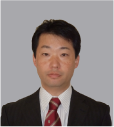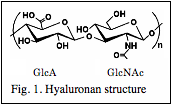Professor Naoki Itano
 ■Area and Subject Taught:Molecular oncology, Biochemistry
■Area and Subject Taught:Molecular oncology, Biochemistry
■Research Theme(s):Development of Innovative Technologies for Healthy Longevity
■Academic Degrees:Ph.D.
■Keywords for Research Field:Cancer, Anti-aging, Hyaluronan
[Research Overview]
We here in Japan are facing a multitude of problems caused by the rapid growth of what has been termed the “super-aged society”. The aims of our research are to improve the morbidities that are characteristic of age progression and to establish innovative technologies that can ensure a comfortable quality of life (QOL) for elderly. To this end, our laboratory has been pursuing the following research programs using advanced technologies in molecular and cellular biology, biochemistry, and genetic engineering.
- Elucidation of the Biosynthetic Process of Hyaluronan and its Application to Anti-aging Technologies
 There are an increasing number of bedridden elderly people in Japan with a loss of joint function due to conditions like osteoarthritis. Hyaluronan (HA) acts as a cushion and lubricant in articulating joints. It is an integral component of the synovial fluid between joints, but becomes reduced by age and thereby causes functional disorders. HA is a high molecular-mass polysaccharide found in the extracellular matrix, especially of that of connective tissues, and is composed of repeating disaccharide units in which N-acetylglucosamine (GlcNAc) and glucuronic acid (GlcUA) are linked together by alternating ß-1,3 and ß-1,4 linkages (Figure 1). Our laboratory discovered the first mammalian HA synthase (HAS) gene and has been thoroughly investigating the mechanism of HA biosynthesis ever since. Recently, we succeeded in establishing an in vitro reconstitutionsystem using a recombinant HAS protein and developed a screening system for compounds that have HAS activation potential. Our future challenge is therefore to understand the entire mechanism of HA biosynthesis and apply this knowledge to developing innovative anti-aging technologies.
There are an increasing number of bedridden elderly people in Japan with a loss of joint function due to conditions like osteoarthritis. Hyaluronan (HA) acts as a cushion and lubricant in articulating joints. It is an integral component of the synovial fluid between joints, but becomes reduced by age and thereby causes functional disorders. HA is a high molecular-mass polysaccharide found in the extracellular matrix, especially of that of connective tissues, and is composed of repeating disaccharide units in which N-acetylglucosamine (GlcNAc) and glucuronic acid (GlcUA) are linked together by alternating ß-1,3 and ß-1,4 linkages (Figure 1). Our laboratory discovered the first mammalian HA synthase (HAS) gene and has been thoroughly investigating the mechanism of HA biosynthesis ever since. Recently, we succeeded in establishing an in vitro reconstitutionsystem using a recombinant HAS protein and developed a screening system for compounds that have HAS activation potential. Our future challenge is therefore to understand the entire mechanism of HA biosynthesis and apply this knowledge to developing innovative anti-aging technologies.
- Studies on Cancer Microenvironment Formation and the Establishment of Therapies Targeting Cancer Stem Cell Niches
Cancer has become the leading cause of death in our country due to increased longevity, and as such the eradication of cancer has become a social mission. Although it is well known that uncontrolled cell proliferation leads to the development of cancers, the precise mechanisms underlying metastatic tumor progression and recurrence have not been fully resolved. Cancer stem cells (CSCs) have recently been reported to exist in many malignancies and have attracted remarkable attention because they are believed to be the only cells capable of initiating cancer growth. Because CSCs are relatively resistant to conventional chemotherapy and radiotherapy, and because they are closely associated with cancer metastasis and recurrence, targeting them is now a primary goal in cancer therapy.
CSCs, like normal stem cells, reside and maintain their stemness within a specialized microenvironment called a stem cell niche. Thus, strategies to limit their stemness and malignant transformation must focus on the importance of targeting this CSC niche. The main purpose of our research in this domain is to identify the cellular and molecular cues that govern the formation of the specialized CSC niche microenvironment and establish novel therapies to induce a state of cancer dormancy by controlling the niche.
[Notable Publications and Works]
- Kobayashi N, Miyoshi S, Mikami T, Koyama H, Kitazawa M, Takeoka M, Sano K, Amano J, Isogai Z, Niida S, Oguri K, Okayama M, McDonald JA, Kimata K, Taniguchi S, and Itano N. Hyaluronan deficiency in tumor stroma impairs macrophage trafficking and tumor neovascularization. (2010) Cancer Res. 70(18):7073-7083.
- Koyama, H., Kobayashi, N., Harada, M., Takeoka, M., Kawai, Y., Sano, K., Fujimori, M., Amano, J., Ohhashi, T., Kannagi, R., Kimata, K., Taniguchi, S., and Itano, N. Significance of Tumor-Associated Stroma in Promotion of Intratumoral Lymphangiogenesis: Pivotal Role of a Hyaluronan-Rich Tumor Microenvironment. (2008) Am. J. Pathol. 172:179-193.
- Itano, N., and Kimata, K. Altered hyaluronan biosynthesis in cancer progression. (2008) Semin. Cancer Biol. 18:268-274.
- Koyama, H., Hibi, T., Isogai, Z., Yoneda, M., Fujimori, M., Amano, J., Kawakubo, M., Kannagi, R., Kimata, K., Taniguchi, S., and Itano, N. Hyperproduction of Hyaluronan in Neu-Induced Mammary Tumor Accelerates Angiogenesis through Stromal Cell Recruitment: Possible Involvement of Versican /PG-M.(2007) Am. J. Pathol. 170:1086-1099.